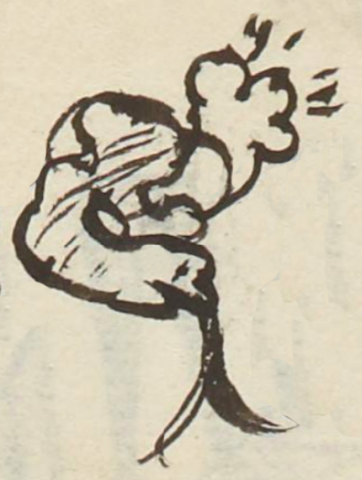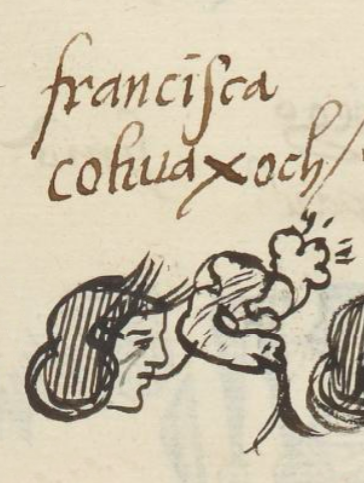Coaxoch (MH505v)
This is a black-line drawing of the compound glyph for the personal name, Coaxoch (literally, "Serpent-Flower," but this is a plant name), attested here attested as female. It shows a serpent (coatl) and a flower (xochitl). The serpent has two dots for eyes and a protruding, bifurcated tongue that is very long, hanging down in front of the snake. The snake's body has an amorphous shape with some texturing or shading. The flower has a base from which a tripartite cluster of sepals emerge. Six stamens or pistils emerge above the petals.
Stephanie Wood
francisca
cohuaxoch
Francisca Coaxoch
Stephanie Wood
1560
Jeff Haskett-Wood
snakes, serpents, cohuatl, serpientes, flowers, flores, linderos, cohuatl

Coaxoch, a person's name (attested as female) and a plant name, coaxochitl, https://nahuatl.wired-humanities.org/content/coaxoch
Serpiente-Flor (el nombre de una planta)
Stephanie Wood
Matrícula de Huexotzinco, folio 505v, World Digital Library, https://www.loc.gov/resource/gdcwdl.wdl_15282/?sp=90&st=image
This manuscript is hosted by the Library of Congress and the World Digital Library; used here with the Creative Commons, “Attribution-NonCommercial-ShareAlike 3.0 License” (CC-BY-NC-SAq 3.0).


